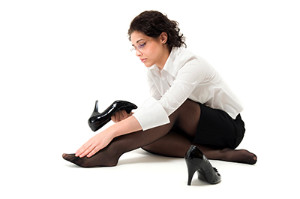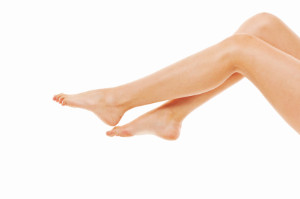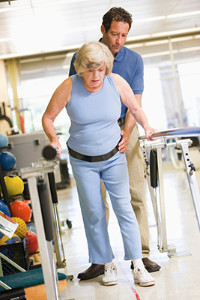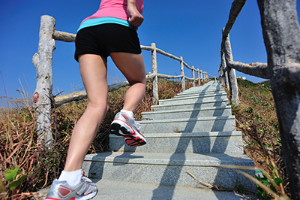
 High heels have long held the stigma of being uncomfortable and unconventional for daily wear and for work. Health risks such as nerve damage, early arthritis, and long-term joint pain all come with long-term wear. Emerging business women, however, are looking to turn that notion around and develop high heels that do not damage the feet as much. Dolly Singh, CEO of a footwear company, is collaborating with designer Julia Thomas to create an office-friendly collection. When starting her brand, Singh recruited rocket scientists from SpaceX, along with a number of engineers to develop shoes. Her new collection will reportedly reduce the amount of pressure typically placed on the toes and the balls of the feet, using aerospace-grade foam and redesigned heels.
High heels have long held the stigma of being uncomfortable and unconventional for daily wear and for work. Health risks such as nerve damage, early arthritis, and long-term joint pain all come with long-term wear. Emerging business women, however, are looking to turn that notion around and develop high heels that do not damage the feet as much. Dolly Singh, CEO of a footwear company, is collaborating with designer Julia Thomas to create an office-friendly collection. When starting her brand, Singh recruited rocket scientists from SpaceX, along with a number of engineers to develop shoes. Her new collection will reportedly reduce the amount of pressure typically placed on the toes and the balls of the feet, using aerospace-grade foam and redesigned heels.
High heels have a history of causing foot and ankle problems. If you have any concerns about your feet or ankles, contact Dr. Alan J. Spector from Shore Podiatry. Our doctor can provide the care you need to keep you pain-free and on your feet.
Effects of High Heels on the Feet
High heels are popular shoes among women because of their many styles and societal appeal. Despite this, high heels can still cause many health problems if worn too frequently.
Which Parts of My Body Will Be Affected by High Heels?
What Kinds of Foot Problems Can Develop from Wearing High Heels?
How Can I Still Wear High Heels and Maintain Foot Health?
If you want to wear high heeled shoes, make sure that you are not wearing them every day, as this will help prevent long term physical problems. Try wearing thicker heels as opposed to stilettos to distribute weight more evenly across the feet. Always make sure you are wearing the proper shoes for the right occasion, such as sneakers for exercising. If you walk to work, try carrying your heels with you and changing into them once you arrive at work. Adding inserts to your heels can help cushion your feet and absorb shock. Full foot inserts or metatarsal pads are available.
If you have any questions please feel free to contact our office located in Point Pleasant, NJ . We offer the newest diagnostic and treatment technologies for all your foot and ankle needs.
Read more about Effect of High Heels on the Feet Ingrown toenails can be very painful to experience. Most common in teenagers, though fairly common in the greater population, an ingrown toenail is characterized by the toenail digging into and breaking the adjacent soft tissue. This can lead to infection if the breaks in the skin remain for too long. Treatment of ingrown toenails range from clipping the nail more appropriately to surgically removing the nail or even destroying the growth plate in the nail bed. For chronic sufferers these surgical options may be necessary. It is best to consult a podiatrist if you have ingrown toenails.
Ingrown toenails can be very painful to experience. Most common in teenagers, though fairly common in the greater population, an ingrown toenail is characterized by the toenail digging into and breaking the adjacent soft tissue. This can lead to infection if the breaks in the skin remain for too long. Treatment of ingrown toenails range from clipping the nail more appropriately to surgically removing the nail or even destroying the growth plate in the nail bed. For chronic sufferers these surgical options may be necessary. It is best to consult a podiatrist if you have ingrown toenails.
Ingrown toenails can become painful if they are not treated properly. For more information about ingrown toenails, contact Dr. Alan J. Spector of Shore Podiatry. Our doctor can provide the care you need to keep you pain-free and on your feet.
Ingrown Toenails
Ingrown toenails occur when a toenail grows sideways into the bed of the nail, causing pain, swelling, and possibly infection.
Causes
Prevention
Because ingrown toenails are not something found outside of shoe-wearing cultures, going barefoot as often as possible will decrease the likeliness of developing ingrown toenails. Wearing proper fitting shoes and using proper cutting techniques will also help decrease your risk of developing ingrown toenails.
Treatment
Ingrown toenails are a very treatable foot condition. In minor cases, soaking the affected area in salt or antibacterial soaps will not only help with the ingrown nail itself, but also help prevent any infections from occurring. In more severe cases, surgery is an option. In either case, speaking to your podiatrist about this condition will help you get a better understanding of specific treatment options that are right for you.
If you have any questions please feel free to contact our office located in Point Pleasant, NJ . We offer the newest diagnostic and treatment technologies for all your foot and ankle needs.
 Foot diseases and other foot-related problems often become more prevalent as we age. Years of bearing body weight and certain ailments can combine to wreak havoc on the feet and ankles. The foot problems we may experience as time goes on vary from minor to potentially very serious. First and foremost, if you are a diabetic, foot care needs to be a high priority. Diabetic ulcers and sores, if left untreated, can lead to infection and even gangrene, resulting in amputation. Daily foot inspections are necessary to ensure that there are no cuts, sores, or swelling. Even something as seemingly minor as cracked skin on the foot can lead to terrible consequences if gone unnoticed. Using moisturizer and soap that doesn’t dry out the skin can help in this area. That being said, it is also important to keep the feet dry, as toenail fungus grows more readily in moist environments. Keeping the feet elevated is also a good tip. This will help circulate the blood to the lower extremities. Poor circulation can lead to serious medical conditions.
Foot diseases and other foot-related problems often become more prevalent as we age. Years of bearing body weight and certain ailments can combine to wreak havoc on the feet and ankles. The foot problems we may experience as time goes on vary from minor to potentially very serious. First and foremost, if you are a diabetic, foot care needs to be a high priority. Diabetic ulcers and sores, if left untreated, can lead to infection and even gangrene, resulting in amputation. Daily foot inspections are necessary to ensure that there are no cuts, sores, or swelling. Even something as seemingly minor as cracked skin on the foot can lead to terrible consequences if gone unnoticed. Using moisturizer and soap that doesn’t dry out the skin can help in this area. That being said, it is also important to keep the feet dry, as toenail fungus grows more readily in moist environments. Keeping the feet elevated is also a good tip. This will help circulate the blood to the lower extremities. Poor circulation can lead to serious medical conditions.
If you need your feet checked, contact Dr. Alan J. Spector of Shore Podiatry. Our doctor will attend to all of your foot and ankle needs and provide you with quality treatment.
Geriatrics and Podiatry
When people age, some common issues that may occur are bone density loss, dry skin, poor circulation, and rough brittle nails. These issues may also affect your foot health if the necessary steps are not taken to alleviate the problems.
It is important to take care of your feet because feet that are injured or diseased can affect your overall health. Having painful feet hinders your ability to do daily activities or may decrease your willingness to do the things that you need to do.
Visiting Your Geriatrician
As we age, health problems become more likely, so it is essential to visit your doctor for check-ups to ensure that you are doing the best you can to take care of your health. It is recommended to check your feet frequently for any possible cuts, bruises, swelling, corns or any other irregularities.
Taking Care of Elderly Feet
Cracked or dry feet can be treated by applying moisturizer often. It is also important not to wear old socks because the older the sock is, the higher the possibility there will be that there is bacteria there. Wear fresh socks and make sure they fit properly.
Proper foot health means that you can have a more active lifestyle and you will not be bogged down by pain. Foot health also leads to good circulation, which is paramount for overall health.
If you have any questions, please feel free to contact our office located in Point Pleasant, NJ . We offer the newest diagnostic tools and technology to treat your foot and ankle needs.
 Running can be a very effective way to stay in shape, burn calories and increase your overall health, both mental and physical. However, pounding the pavement is exactly what your feet are doing, and this can lead to some serious foot and ankle issues. The ground that we run on is generally a hard surface, so the constant impact of our feet is something that needs to be taken into consideration when running often. Some tips to consider would be to try finding a track surface to run on. Though this option may not be available to all, the surface is made to absorb some of the shock of the impact, thereby reducing the stress on your joints and muscles. Shoes should be well-fitting and there are insoles available that also may help absorb the shock.
Running can be a very effective way to stay in shape, burn calories and increase your overall health, both mental and physical. However, pounding the pavement is exactly what your feet are doing, and this can lead to some serious foot and ankle issues. The ground that we run on is generally a hard surface, so the constant impact of our feet is something that needs to be taken into consideration when running often. Some tips to consider would be to try finding a track surface to run on. Though this option may not be available to all, the surface is made to absorb some of the shock of the impact, thereby reducing the stress on your joints and muscles. Shoes should be well-fitting and there are insoles available that also may help absorb the shock.
Exercising your feet regularly with the proper foot wear is a great way to prevent injuries. If you have any concerns about your feet, contact Dr. Alan J. Spector of Shore Podiatry. Our doctor will treat your foot and ankle needs.
How to Prevent Running Injuries
Many common running injuries are caused by overuse and overtraining. When the back of the kneecap starts wearing out and starts causing pain in your knee, this is commonly referred to as runner’s knee. Runner’s knee is a decrease in strength in your quadriceps and can occur if you’re not wearing properly fitted or supporting shoes. To prevent runner’s knee, focusing on hip strengthening is a good idea, as well as strengthening your quads to keep the kneecaps aligned.
What Are Some Causes of Running Injuries?
- One cause of a common running injury is called iliotibial band syndrome.
- Plantar fasciitis is also another common injury.
- Stress fractures can occur from overtraining, lack of calcium, or even your running style.
Best Ways to Prevent Running Injuries
- Wear footwear that fits properly and suits your running needs.
- Running shoes are the only protective gear that runners have to safeguard them from injury.
- Make a training schedule. Adding strengthening exercises as well as regular stretching can help keep you strong and limber and can lessen the possibility of injuries.
- Stretching keeps muscles limber; this will help you gain better flexibility.
If you have any questions please feel free to contact our office located in Point Pleasant, NJ . We offer the newest diagnostic and treatment technologies for all your foot and ankle needs.